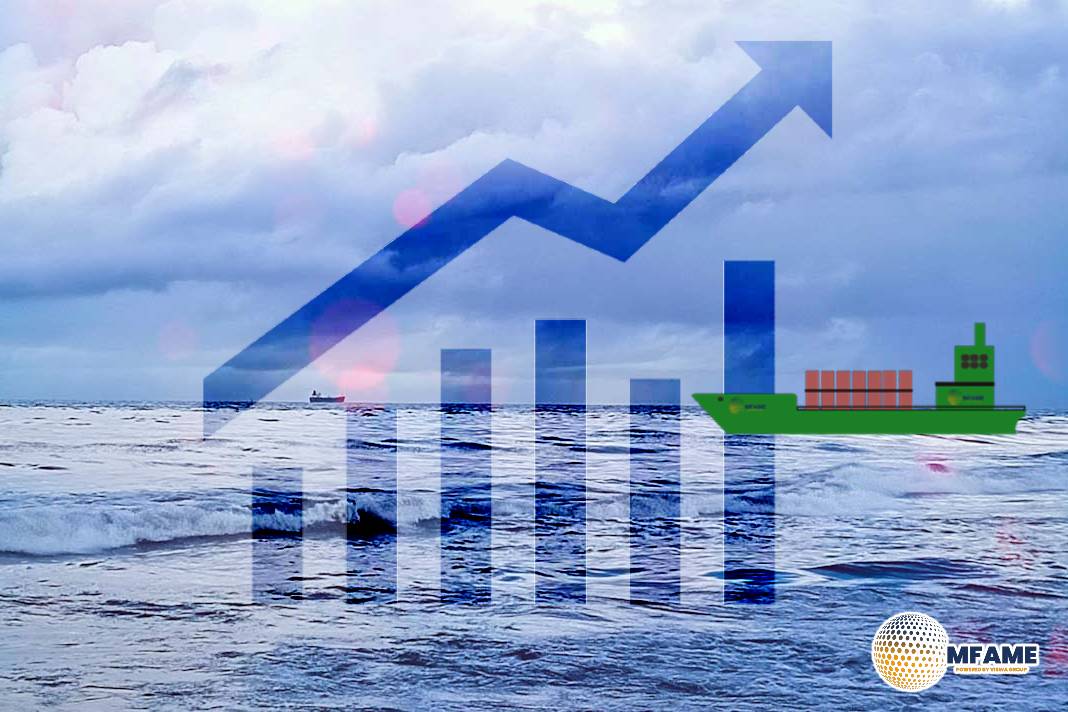- US Gulf Coast volatility driven by regional tightness
- Higher transits through Panama Canal affect ton miles
The Atlantic Supramax dry bulk market displayed steady and overall positive cargo demand in the third quarter. This stability was attributed to balanced supply and demand, although ton-mile demand began to erode, reports SP Global.
US Gulf Coast keeps positional sentiment
In the North Atlantic and US Gulf Coast region, market sentiment remained positional, with spot rates fluctuating due to tonnage availability and regional tightness, while grain demand to Asia underperformed overall.
In the US Gulf Coast region, the segment experienced a tick down in demand for commodities in Q3, resulting mainly in lower volumes compared with Q2.
According to CAS data, total volumes for Supramax ships from the US Gulf Coast to the Far East for Q3 stood at 6 million metric tons, down close to 12% compared with Q2 volumes of 6.9 MMt.
Meanwhile, agribulk and minor bulk cargo types from the US Gulf Coast to the Far East accounted for 42% and 37% of the total volumes, respectively, while coal accounted for 21% in Q3.
Compared with Q2, Agribulk cargoes saw a gradual decline of 36%, while minor bulk decreased by 2% and coal cargo surged by 112%, according to CAS data.
However, on average, Platts New Orleans-to-Kashima 50k grains route spot Time Charter Equivalent rates were up by 36% year on year over January-September, according to Commodity Insights data.
Meanwhile, spot rates were supported due to coal and petcoke shipments to the Far East and India.
On average, Platts Houston to Krishnapatnam 50k petcoke route spot Time Charter Equivalent rates pushed up by 37% year on year over January-September, according to Commodity Insights data.
Rates rose quickly due to increased demand for coal and petcoke shipments to the Far East and India, alongside the usual grain cargoes while underlying imbalances in the region appeared to be developing, another shipbroker noted.
ECSA grains market resilient amid volatility
In the South Atlantic, the grains market on the East Coast of South America with trips to the Far East appeared to be supporting the segment in Q3 with spot freight rates performing better while volatility was sustained as charterers exhibited some resistance due to healthy tonnage count.
In Q3, volumes increased by 17% on the quarter and by 36% year on year, according to CAS data.
However, opportunities at the end of Q3 remained limited for vessels opening in the South Atlantic, with activity constrained and negative market sentiment prevailing, a shipbroker noted.
On average, Platts Santos to Qingdao 50k grains route spot freight rates pushed up by 21% year on year over January-September, Commodity Insights data showed.
Continent and Baltic Sea scrap runs quiet
The Supramax segment in the Continent and Baltic Sea regions experienced a sluggish trading quarter, with an oversupply of ships driving down spot rates, while smaller geared [Handysize] vessels maintained some activity.
Scrap rates continued to decline due to a lack of fresh cargoes, with recent spikes mainly attributed to positional tonnage.
Time-charter rates for Supramax ships transporting scrap to the Mediterranean Sea ranged in the low $13,000s/d. Meanwhile, on average, Platts Rotterdam to Aliaga 40k scrap route spot Time Charter Equivalent rates decreased by 4% quarter over quarter in Q3, according to Commodity Insights data.
Panama Canal Supramax transits pose ton-mile risk
The normalization of Supramax transits around the Panama Canal is raising concerns as it poses a potential risk to ton-mile demand. With the number of transiting vessels recovering, market participants are noting the potential negative impact on overall ton-miles.
In the Atlantic, an improving number of ballasters heading towards the Panama Canal could signal anticipated demand for grain exports from the US Gulf, according to market sources.
However, some noted that the Supramax forecast has been revised downward due to weaker current demand in the Atlantic and increased transits through the Canal.
Overall, Supramax and Ultramax deadweight tonnage passage from the US Gulf Coast to the Far East destinations via the Panama Canal depicted positive movements, with a 119% month-on-month increase, according to CAS data.
Did you subscribe to our daily Newsletter?
It’s Free! Click here to Subscribe
Source: SP Global















